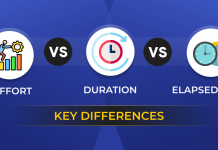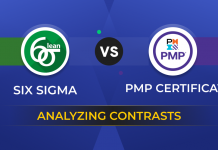
In a recent edition of the PM Network magazine, it was revealed that the average number of projects handled by a project manager at a time is 8. This may seem like a considerable amount of work, but it is difficult to determine where the line can be drawn. Different projects are of different nature and their priorities differ based on the size, complexity, and the industry. Therefore, you can never apply a mathematical equation to determine the exact number of projects which will overload a project manager.
Consequences of Project Overload
In today’s fiercely competitive environment where companies are scrambling for more revenue and market share, it is hard to imagine a project manager who is not overloaded. However, the more projects a project manager handles, the more ineffective he or she tends to become since the focus gets distributed. Project overload can have some serious consequences on the project manager and the team.
- Non-adherence to schedules
- Under-development of skills
- High levels of psychological stress reactions
No project manager can escape this reality. The only choice they have is to find a way to cope with it. Outlined below are various measures that can be implemented to deal with project overload.
Coping with Project Overload
-
Learn to say ‘No’:
A simple ‘No’ can make your day a lot less stressful. Saying ‘No’ is such a tricky thing, especially in an authority dominative culture like India or China. Employees have this inherent mindset that saying ‘No’ is equal to being ‘incapable’. Saying ‘No’ just means that you are aware of your current responsibilities, you are organized and you know for a fact that if you take on more work, you will not be able to fulfill the requirement to the best of your abilities. It is far better than taking up a large amount of work just to impress your superiors and then doing a mediocre job with it. Try and give a concise picture of your current workload to your boss and explain why you cannot take up more projects.
-
Appoint an Able Subordinate for Certain Projects:
You should sit with the different project teams to assess the status of each project, timelines, deliverables, and stakeholder expectations. This way you get to know which of the projects are in immediate need of your attention. Focus on those projects and appoint temporary subordinates to look after other projects which are doing well and do not need your supervision. This way you have made yourself time to work on the projects which are of priority right now, while the others are taken care of by people who are capable and trustworthy.
-
Prioritize Activities and Make a Task List:
The importance of a task list cannot be overstated. As simple as it sounds, a task list could be a lifesaver for project managers in crunch situations. Therefore, make a task list of activities you need to complete based on the priority of the projects. Apart from deadlines, you also need to consider the following aspects when you prioritize your day-to-day activities:
-
-
- Value to organization
- The benefit to project in the longer term
- Consequences to you and the team when not completed
-
Once you have the list in order of importance, you know what you need to do when and how much time you have in hand. As you complete activities and strike off items in the list, the sense of accomplishment in itself will spur you on to complete the rest of the tasks on time.
-
Follow the 80:20 Rule:
The rule is also known as the Pareto principle, named after the scientist who devised the rule, and the law of the vital few. The 80:20 rule states that 80% of effects are caused by 20% of the events. Therefore, it is your duty to identify this 20% of critical tasks and focus all your attention and energy on them.
Apart from the projects you are handling, you might also have other administrative activities to handle each day. Ensure that you do not let your main project management responsibilities take up more than 80% of your time. Use the remaining 20% to perform the other duties of relatively lesser importance in the context of the project.
No project manager can escape the reality of project overload. Therefore, it has become ever more important for a project manager to know how to cope with this challenge. To achieve the desired results, you need to be able to multi-task well and handle more than one project at a time.














